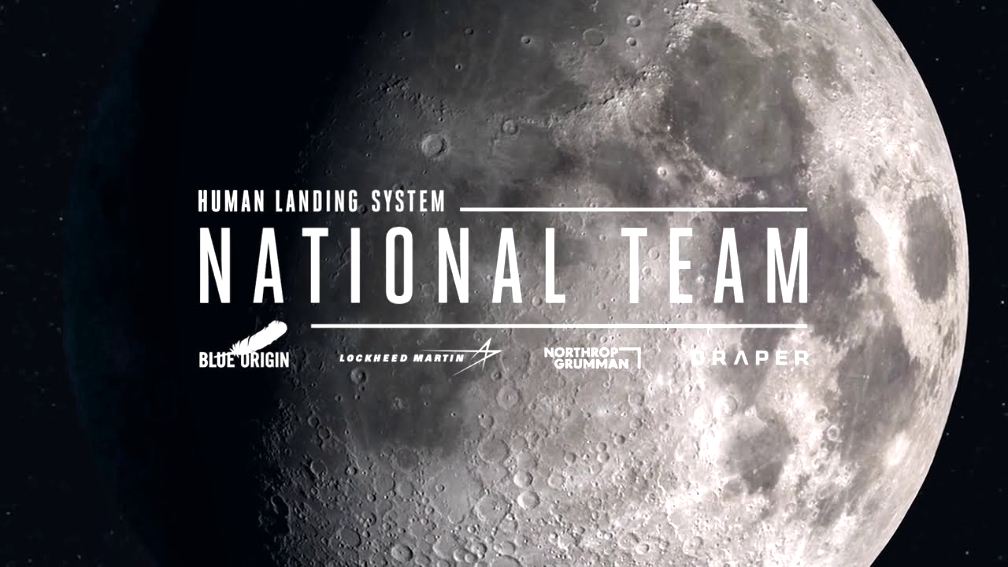
The Blue Origin-led, Human Landing System (HLS) National Team, comprised of Blue Origin, Lockheed Martin, Northrop Grumman, and Draper, has delivered an engineering mockup of a crew lander vehicle that could take American astronauts to the Moon.
The lander is set up in the Space Vehicle Mockup Facility (SVMF), NASA Johnson Space Center’s (JSC) iconic Building 9.

The full-scale engineering mockup showcases two elements of the National Team’s multi-element architecture – the Ascent Element (AE) and Descent Element (DE). Standing at more than 40 feet, it is the Blue Origin National Team’s update to Apollo’s Lunar Module (LM) and will be used to validate the National Team’s approaches for getting crew, equipment, supplies, and samples off and on the vehicle.
The team will collaborate with NASA organizations including JSC’s Astronaut Office to perform engineering and crew operations tests with astronauts aiming to fly the final system within several years.
The National Team HLS design leverages significant prior work, flight heritage, and a modular solution. Modular solutions help to enable faster progress due to the independent development and testing of each element, which permits ongoing improvements and evolution without impacting the full system. This also provides flexibility in the use of different launch vehicles and different concepts of operations.
The Descent Element is based on Blue Origin’s Blue Moon cargo lander and BE-7 LOX/hydrogen engine, both in development for more than three years. The Ascent Element incorporates avionics, software, life support hardware, crew interfaces, and mission operations from Lockheed Martin’s human-rated, deep-space Orion vehicle that will fly on the Artemis I and II missions.
A consistent cockpit experience and training from Orion to the AE makes the end-to-end mission safer for Artemis. The Transfer Element, a propulsive stage that starts the lander on its descent trajectory from lunar orbit, is based on Northrop Grumman’s Cygnus vehicle that provides logistics resupply to the International Space Station; and Draper provides descent guidance and avionics to the National Team.
The mockup will remain at JSC through early 2021 for a series of tests and simulations. Over the coming months, the National Team will continue to build and increase mockup fidelity. NASA’s Human Landing System Program is managed at Marshall Space Flight Center in Huntsville, Alabama.
Executive Comment
“Testing this engineering mockup for crew interaction is a step toward making this historic mission real,” said Brent Sherwood, VP of Advanced Development Programs, Blue Origin. “The learning we get from full-scale mockups can’t be done any other way. Benefitting from NASA’s expertise and feedback at this early stage allows us to develop a safe commercial system that meets the agency’s needs.”
“Each partner brings its own outstanding legacy to the National Team. These include developing, integrating, and operating human-rated spacecraft, launch systems and planetary landers. Together we form an excellent team to send our next astronauts to the Moon in 2024,” said Kirk Shireman, vice president of Lunar Campaigns at Lockheed Martin Space. “Augmenting state of the art tools with physically being able to see, interact, and evaluate a full-up lander in person is critical. It will inform our design and requirements earlier in the program allowing us to accelerate our development and meet the 2024 lunar landing goal.”
